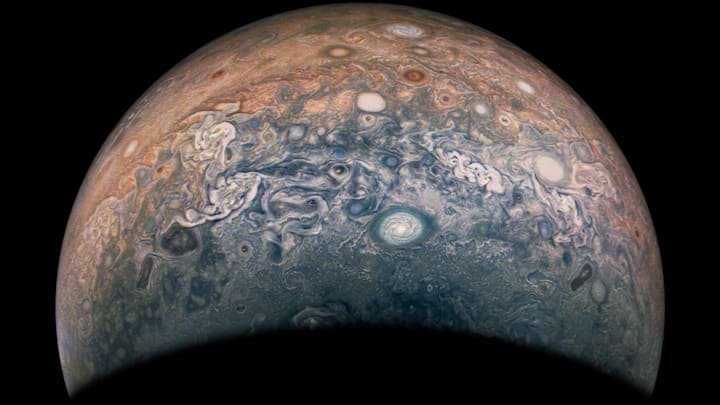There’s still much to discover about Jupiter, but NASA’s Juno spacecraft has made the learning process easier for scientists. According to the organization, the orbiter is the first to reveal what happens beneath the gas giant’s atmosphere, collecting three terabits of valuable data during its primary mission. The probe—now in its extended mission—has captured some of the most stunning images of Jupiter yet.
October 23, 2024, saw the Juno spacecraft’s most recent perijove, or the point where it’s closest to Jupiter. The orbiter’s color camera (the JunoCam) caught detailed views of the planet’s tumultuous upper atmosphere. The collage of photos below shows swirling weather patterns reminiscent of a watercolor painting.

The latest perijove marked the Juno spacecraft’s 66th close flyby since it entered Jupiter’s orbit in July 2016. You can view more images on the Mission Juno website.
You may think NASA has a dedicated team of professionals to process raw pictures from the Juno spacecraft, but that’s not the case. Citizen astronomers download, process, and upload photos to the Mission Juno page, which shares information about the Jovian system (Jupiter and its moons). NASA says it’s looking for a range of image processing, “from simply cropping an image to highlighting a particular atmospheric feature, as well as adding your own color enhancements, creating collages and adding advanced color reconstruction.”
The agency also encourages amateur astronomers to upload telescopic pictures of Jupiter they’ve taken themselves. This data from the public can help NASA determine which areas the JunoCam should focus on when passing the planet.
CNET reports that the Juno spacecraft’s next perijove will be November 25. According to NASA, the orbiter will continue its mission through September 2025 or until it stops functioning. Until then, space enthusiasts should stay tuned for more captivating photos of Jupiter—we’re sure the gas giant won’t disappoint.
Read More About Space:
